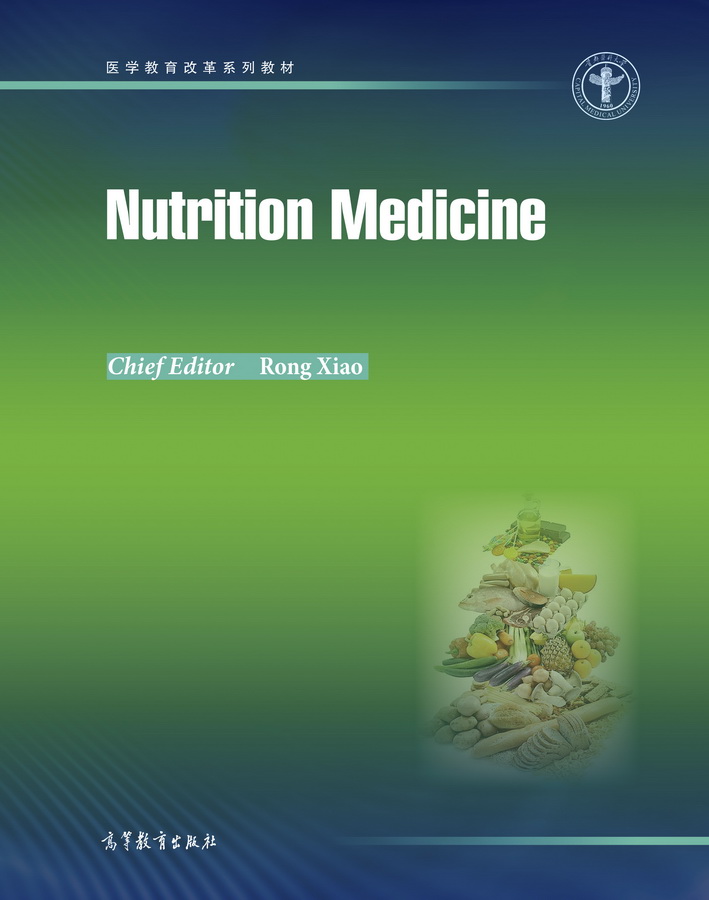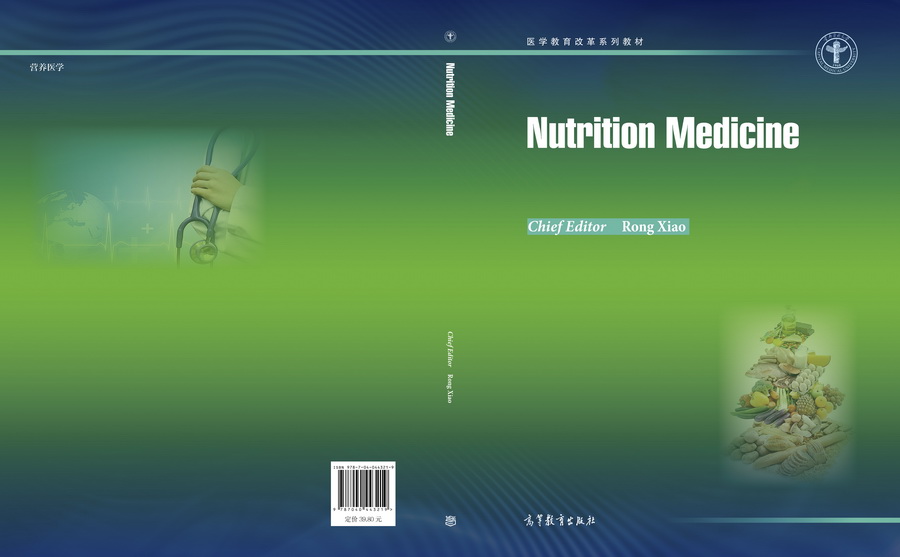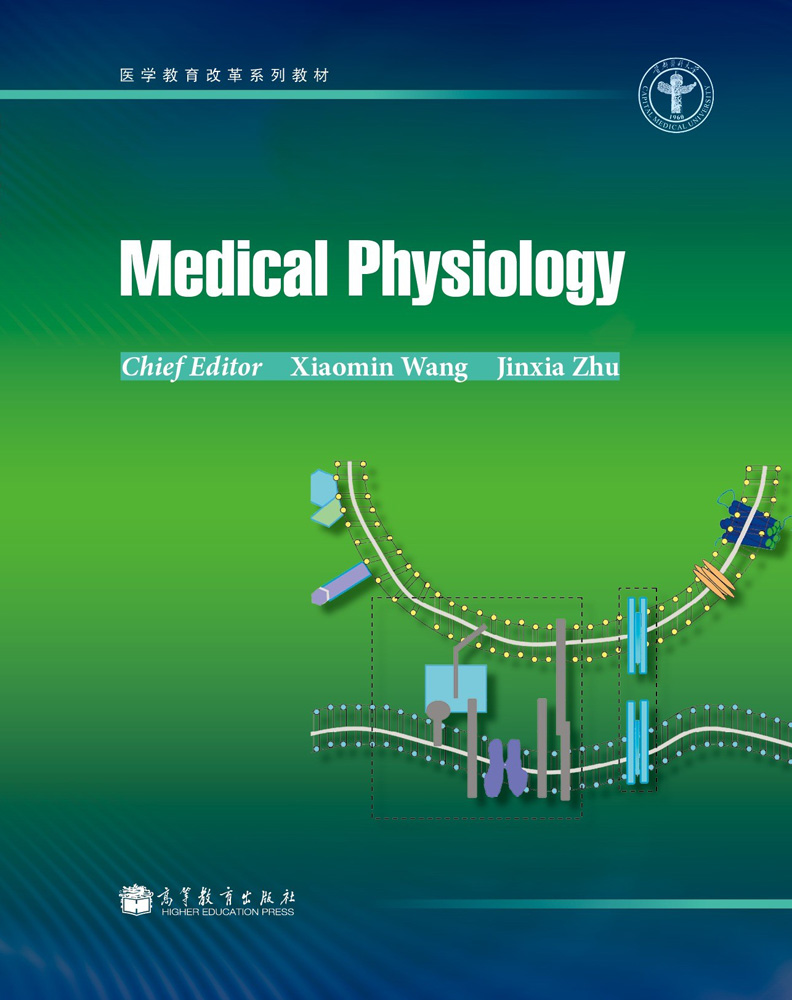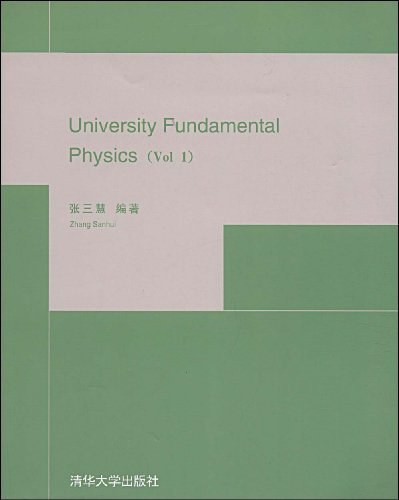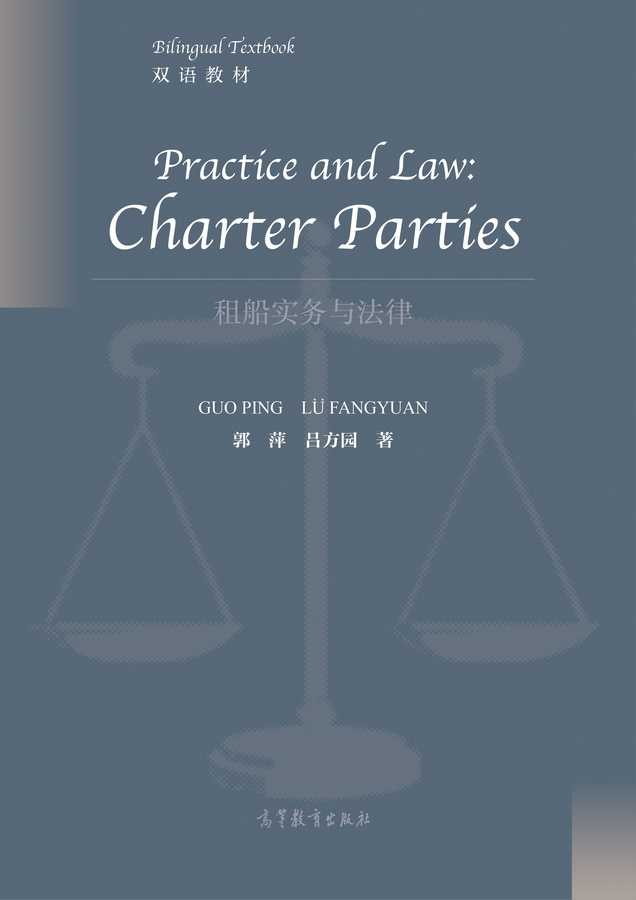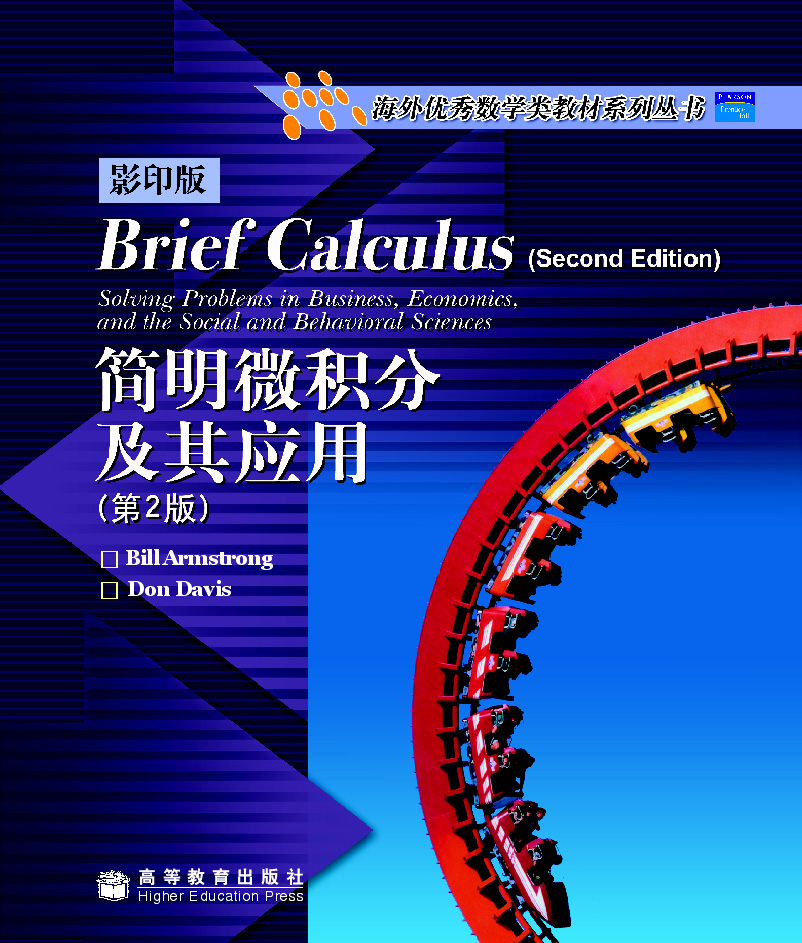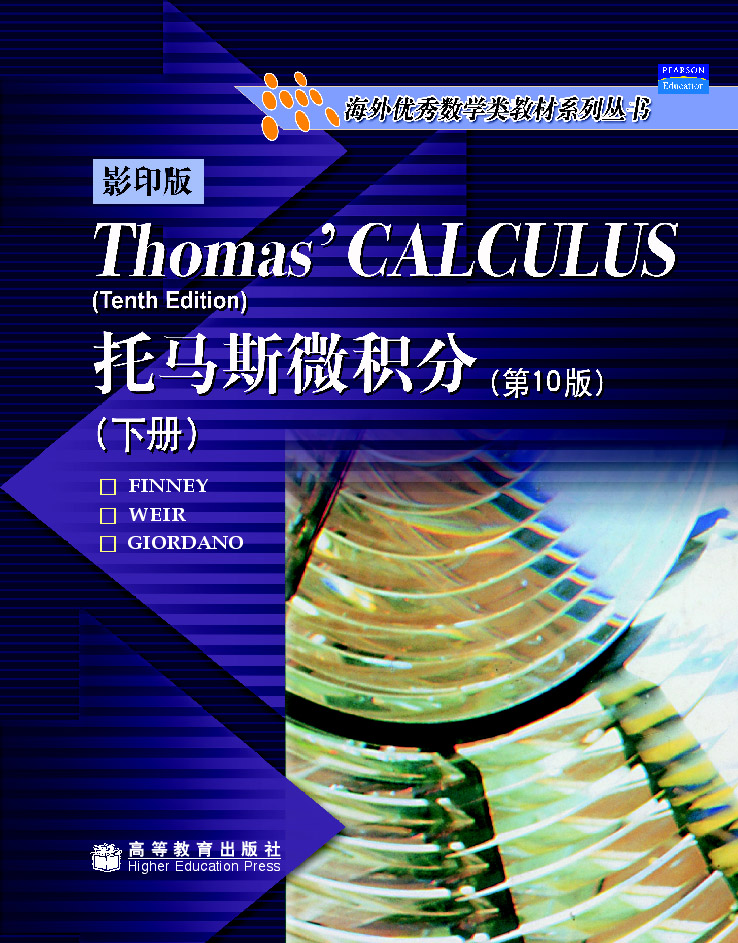Nutrition Medicine(营养医学)
作者: 肖荣
出版时间:2015-12
出版社:高等教育出版社
- 高等教育出版社
- 9787040443219
- 1版
- 71231
- 40261572-8
- 平装
- 大大16开
- 2015-12
- 500
- 322
- 医学
- 临床医学类
- R-058
- 医学
- 本科
《营养医学》为医学教育改革系列教材之一,全英文编写。本书分为7篇40章,内容包括营养与能量、植物素与健康、食物营养与健康、生命周期的营养、营养与疾病、标准与指南、营养状态的评价等,全面介绍了学科相关内容。本书适用于医学本科留学生、研究生及相关研究人员。
前辅文
Chapter 1 Nutrients and Energy
Section 1Protein and Amino Acids
1.1 Introduction
1.2 Amino Acids
1.3 Limiting Amino Acids and Protein Quality
1.4 Protein Deficiency and Excess
1.5 Recommendation and Food Sources
Section 2Lipids and Fatty Acids
2.1 Introduction
2.2 Fatty Acids
2.3 Measuring Lipid Quality
2.4 Lipids and Health
2.5 Recommendation and Food Sources
Section 3Carbohydrate and Dietary Fiber
3.1 Introduction
3.2 Carbohydrate and Health
3.3 Recommendation and Food Sources
Section 4Energy
4.1 Introduction
4.2 Metrological Units and Sources of Energy
4.3 Energy Expenditure of Human Body
4.4 Energy Balance and its Regulation
4.5 Energy Imbalance and Health Problems Induced
4.6 Recommendation and Dietary Energy Sources
Section 5Minerals
5.1 Introduction
5.2 Calcium
5.3 Magnesium
5.4 Phosphorus
5.5 Iron
5.6 Zinc
5.7 Iodine
5.8 Selenium
Section 6Vitamins
6.1 Introduction
6.2 Vitamin A
6.3 Vitamin D
6.4 Vitamin E
6.5 Vitamin B 1
6.6 Vitamin B 2
6.7 Vitamin B 6
6.8 Folate
6.9 Niacin
6.10 Vitamin C
Chapter 2 Phytochemicals and Health
Section 1Introduction
1.1 Classification
1.2 Biological Activity
1.3 Overconsumption and Adverse Effects
Section 2Carotenoids
2.1 Chemical Structure and Classification
2.2 Carotenoids and Health
Section 3Polyphenols
3.1 Introduction
3.2 Polyphenols and Health
Section 4Phytosterol
4.1 Introduction
4.2 Phytosterol and Health
4.3 Application of Phytosterol in Different Countries
Section 5Organosulfur Compounds
5.1 Introduction
5.2 Organosulfur Compounds and Health
Section 6Monoterpene Compounds
6.1 Introduction
6.2 Monoterpene Compounds and Health
Section 7Protease Inhibitors
7.1 Introduction
7.2 Protease Inhibitor and Health
Chapter 3 Food Nutrition and Health
Section 1Cereal
1.1 Introduction
1.2 Structure and Nutrient Distribution of Cereal Crops
1.3 Nutrients Contained in Cereal Crops
1.4 Impact of Processing and Storage on the Nutrients in Cereals
1.5 Cereals and Health
Section 2Legume
2.1 Introduction
2.2 Types of Legumes
2.3 Nutrients in Legume
2.4 Legume Products
Section 3Fruit and Vegetable
3.1 Introduction
3.2 Impacts of Processing and Preparation on the Nutrients in Fruits and Vegetables
3.3 Fruits/Vegetables and Health
Section 4Meat, Poultry and Fish
4.1 Introduction
4.2 Impacts of Processing and Preparation on the Nutrients in Meat, Poultry and Fish
4.3 Meat, Poultry, Fish and Health
Section 5Milk
5.1 Introduction
5.2 Milk and Health
Chapter 4 Life Cycle Nutrition
Section 1Nutrition during Pregnancy and Lactation
1.1 Nutrition during Pregnancy
1.2 Nutrition during Lactation
Section 2Infant and Child
2.1 Physiological Characters of Infant and Child
2.2 Nutrient Needs
2.3 Dietary Guidelines for Infant and Child
2.4 Early Life Nutrition and Later Health
Section 3Teen
3.1 Physiological Characters of Teen
3.2 Nutrient Needs
3.3 Potential Nutrition related Problems
3.4 Dietary Guideline for Teen
Section 4The Elderly
4.1 Introduction
4.2 Physiological Characters of the Elderly
4.3 Nutrient Needs of the Elderly
4.4 Dietary Guideline for the Elderly
Chapter 5 Nutrition and Diseases
Section 1Inpatients Nutrition
1.1 Introduction
1.2 Nutritional Assessment of Inpatients
1.3 Nutritional Support
1.4 Daily Requirements of Energy and Nutrients
Section 2Hyperlipidemia
2.1 Introduction
2.2 Factors and Hyperlipidemia
2.3 Dietary Prevention for Hyperlipidemia
2.4 Education Program for Cholesterol Testing and Management
Section 3Diabetes and Impaired Fasting Glucose
3.1 Introduction
3.2 Nutrition and Type 2 Diabetes Mellitus
3.3 Dietary Prevention
Section 4Obesity and Overweight
4.1 Introduction
4.2 Nutritional Factors and Obesity
4.3 Obesity and Health
4.4 Prevention of Obesity
Section 5Metabolic Syndrome
5.1 Introduction
5.2 Dietary Prevention
Section 6Cancer
6.1 Introduction
6.2 Diet, Nutrition and Cancer
6.3 Dietary Prevention of Cancer
Section 7Gout
7.1 Introduction
7.2 Dietary Prevention
Section 8Protein, Salt and Chronic Kidney Disease
8.1 Protein and Chronic Kidney Disease
8.2 Salt and Chronic Kidney Disease
8.3 Dietary Prevention
Section 9Alcohol and Hepatobiliary Disease
9.1 Introduction
9.2 Alcohol and Hepatobiliary Health
9.3 Dietary Prevention
Section 10Phenylketonuria
10.1 Introduction
10.2 Etiology and Epidemiology
10.3 Screening and Diagnosis
10.4 Treatment
10.5 Results of Therapy
Chapter 6 Standards and Guidelines
Section 1Dietary Reference Intakes
1.1 Introduction
1.2 Establishment of DRIs
1.3 Application of DRIs
Section 2Dietary Guidelines
2.1 Food based Dietary Guidelines
2.2 Chinese Dietary Guideline
2.3 Dietary Pattern
2.4 Nutrition Strategy and Policy
Chapter 7 Assessment of Nutritional Status
Section 1Introduction
1.1 Introduction
1.2 The Purpose of Nutritional Assessment
Section 2Patient History Related Nutritional Status
2.1 Introduction
2.2 Specific and Non specific Physical Signs Associated with Malnutrition and Deficiency of Micronutrients
2.3 Other Related Signs of Malnutrition
2.4 Signs of Malnutrition in Certain Population
2.5 Advantages and Limitations of Clinical Assessment
Section 3Anthropometry
3.1 Body Height, Weight and Proportions
3.2 Other Anthropometric Measurements
3.3 Advantages and Limitations of Anthropometry
Section 4Biochemical and Hematological Parameters
4.1 Measurement of Nutrient Level in Body Fluids
4.2 Advantages and Limitations of Biochemical Assessment
Section 5Dietary Intake Assessment
5.1 Introduction
5.2 Records (Food Diary)
5.3 24 hour Dietary Recall
5.4 Food Frequency Questionnaire
5.5 Observed Food Consumption
5.6 Summary of Dietary Intake Assessment
Section 6Nutritional Risk Assessment
6.1 Introduction
6.2 Relationship between Risk Assessment and Nutrition
6.3 The Focus of Risk Assessment
6.4 The Process of Nutritional Risk Assessment
6.5 Relevant Issues in Nutritional Risk Assessment

